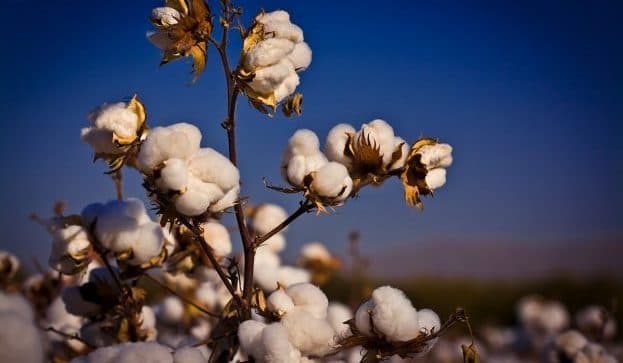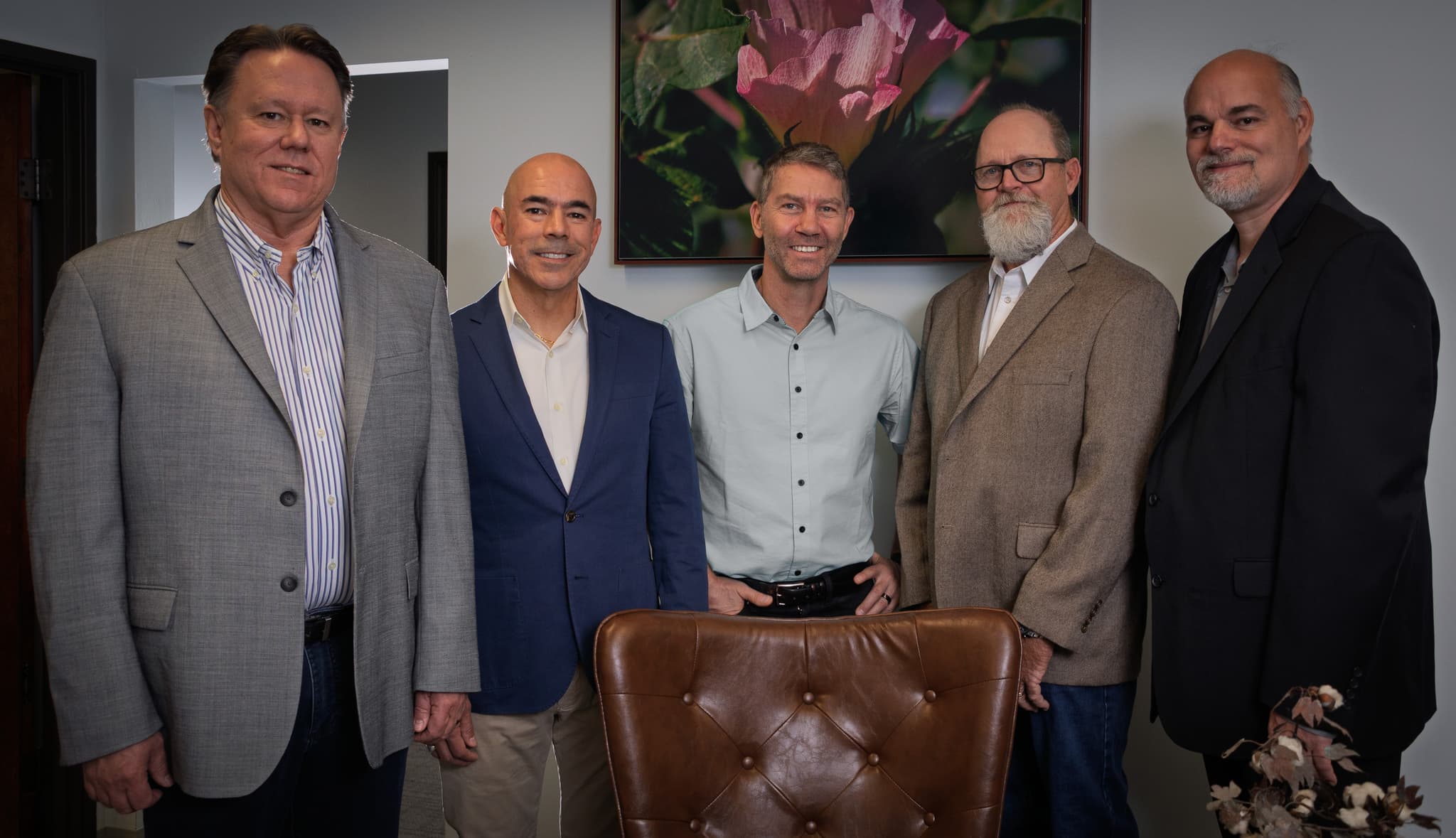Calcot : How A Nearly Century Old Cotton Co-op Is Reinventing Itself

In the heart of California’s San Joaquin Valley, a cotton cooperative founded during the Coolidge administration is proving it has no intention of being left behind by the 21st century. Calcot, Ltd.—a farmer-owned cooperative established in 1927—is navigating the rough terrain of global agriculture with a formula built on grit, adaptability, and a deep understanding of logistics.
“We’re not a large company by any stretch,” says Paul Bush, Calcot’s President and CEO. “But we focus on being the best at what we do—marketing our members’ cotton to the world and extracting every bit of value from the assets we’ve got.”
Calcot’s story is one of quiet evolution. From its origins as a collective of growers in California concerned about market pricing, the organization has expanded across the Southwest, adapting to industry changes and geopolitical tides with a calm pragmatism. Today, under Bush’s leadership, it’s leveraging its location, relationships, and warehousing footprint to carve out new relevance in a volatile market.
Surviving and Thriving
At its peak in the 1980s, Calcot handled more than 3 million bales of cotton annually. That figure has since declined with the drop in U.S. cotton acreage, but the cooperative has found new momentum not in growing volume—but in strategic diversification.
“When I started here 26 years ago, we were primarily focused on marketing cotton for growers in Arizona and California,” Bush explains. “But we expanded organically into Texas, and that now represents about half our business.”
Bush, who began as a field representative before working his way up the ranks, has helped the company weather everything from trade wars and price crashes to droughts and supply chain upheaval. The constant? A stubborn commitment to doing right by their growers.
“In many ways, our members view us as part of their farm,” Bush says. “And I don’t care what they grow, as long as they survive. If a cotton grower has to plant something else for a few years to stay afloat, that’s fine. The goal is to ensure they’re still around when cotton prices come back.”
The Real Estate Pivot
Like any business with staying power, Calcot has learned to play the long game. One of its savviest moves has been rethinking its real estate. The company owns warehouse facilities in Bakersfield, California, and Phoenix, Arizona—locations that once seemed remote but are now engulfed by booming cityscapes.
“It’s ironic,” Bush notes. “When we bought our Phoenix warehouse, it was surrounded by farmland. Now it’s smack in the middle of the city, and that has made it very attractive for logistics players.”
As industrial rents in the Los Angeles Basin have soared, Calcot’s properties—within a few hours' reach of key ports—have become highly valuable. Today, many of its facilities house solar panels and other products unrelated to cotton. That rental income has become a critical lifeline, offsetting operating costs and allowing the cooperative to continue supporting its grower members.
“This is the first year we’ve really seen the full benefit,” Bush says. “But it’s already providing stability, and we expect it to be a major pillar moving forward.”
Deep Roots, Long-Term Relationships
Part of Calcot’s resilience lies in its relationships. Over the decades, it has forged strong bonds with logistics firms—particularly in Arizona, which Bush notes has birthed three of the country’s largest trucking companies.
“We’ve known the founders of Knight and Swift Transportation since they had a single truck,” he says. “We had cotton to ship. They needed loads. That history matters.”
Today, Knight-Swift is the largest trucking company in the U.S., serving clients like Walmart. Calcot, by comparison, is small. But the relationships endure.
“We’re not the biggest customer, but we were there at the beginning. When we call, they make time,” says Bush. “And in today’s tight freight environment, that matters more than ever.”
A Sustainable Supply Chain
In recent years, Calcot has leaned into sustainability—not just as a buzzword, but as a strategy. In 2023, the company was recognized with the Agronix Award for its work promoting the U.S. Cotton Trust Protocol, a program designed to certify sustainable growing practices and enhance traceability.
“For brands and retailers, it’s no longer enough to say your product is sustainable. You have to prove it,” Bush says. “Our goal is to ensure a bale of cotton can be traced from the farm to the shirt on a store shelf.”
That means encouraging growers to adopt best practices and pushing the cooperative’s own operations—like warehousing and transport—to reduce carbon impact. “It’s got to be end-to-end,” Bush insists. “Sustainability can’t be a one-point solution.”
Riding Out the Storms
Still, the outlook for U.S. agriculture remains tough. Prices for row crops like cotton, soybeans, and corn are low. Input costs—from fuel to fertiliser—have risen. And inflation-adjusted, many growers are operating at a loss.
“This is probably the most challenging time I’ve seen in my career,” Bush admits. “We’re in survival mode.”
And yet, there’s a measure of hope in his voice. Like the cyclical nature of the cotton market itself, he believes better days will return—provided enough growers can hold on until they do.
“Farmers know this is a cycle. But the question is: how long will the downtrend last? That’s what makes it so hard.”
Tech-Driven, Capital-Strapped
On the technology front, Calcot is experimenting cautiously. Full-scale automation like Amazon's is out of reach, but the company is investing in AI to improve warehouse management and logistics optimization.
“Our bales are 500 pounds,” Bush says. “We’re not automating that with robots anytime soon. But AI helps us manage inventory, shipping, and stacking configurations. The goal is speed and efficiency—getting cotton to market faster.”
On the grower side, the tech is more advanced. From drones to satellite imagery and water management systems, today’s farmers are at the cutting edge of precision agriculture. But the challenge, again, is affordability.
“Technology is expensive. And right now, farmers can’t wait five or ten years for a return. They need it in two or three.”
Investing in the Future
For all its pragmatic moves, Calcot hasn’t lost sight of its mission: supporting the future of agriculture. The company runs a scholarship program with a $1 million endowment, providing financial aid to students pursuing agricultural degrees.
“It was started by one of our former CEOs in the early '80s,” Bush says. “We’ve given out over a million dollars since then.”
Applicants go through an interview process, and many recipients go on to lead in agribusiness, biotech, and education. “It’s rewarding to watch their journeys,” Bush adds. “And it’s our way of investing in the next generation.”
Final Thoughts
As for Bush himself—26 years in and still helming the ship—does the job still excite him?
“I don’t know if exciting is the right word,” he laughs. “But it’s never boring. We’ve been through trade wars, COVID, supply chain shocks. This business keeps you on your toes.”
With no debt, stable assets, and a loyal team, Calcot is well positioned. Its survival doesn’t hinge on volume—but on trust, efficiency, and an ability to evolve.
“At the end of the day,” Bush says, “our longevity comes from one thing—integrity. Whether it’s with our growers, our buyers overseas, or our partners here at home, people know that when they deal with Calcot, they’re going to get what they were promised. That’s what keeps us going.”

Calcot Management Team from L-R : Paul Bush (President & CEO), Carlo Bocardo (EVP-Sales), Kristjan Svanbergsson (CFO and VP-Finance), Joe Cain (VP-Warehousing) & Douglas Edwards (VP Corporate Operations & IT)